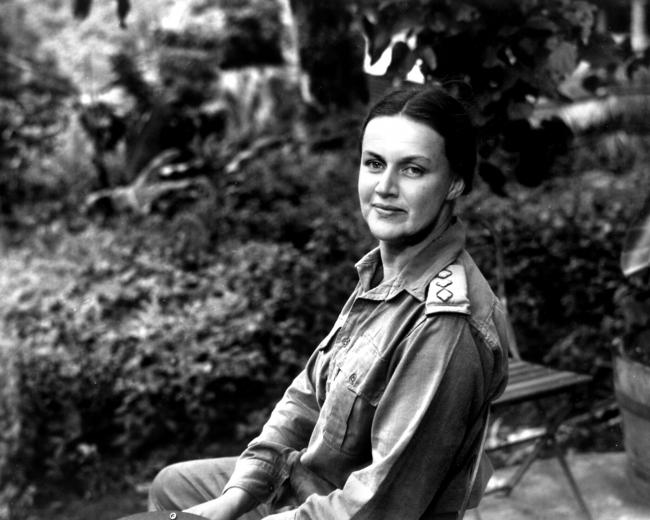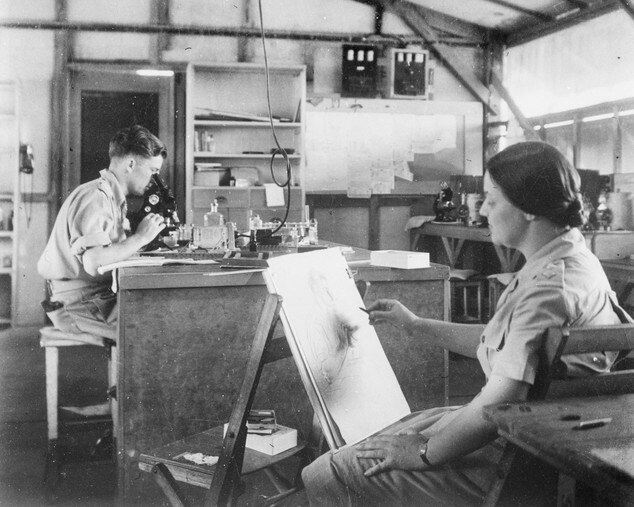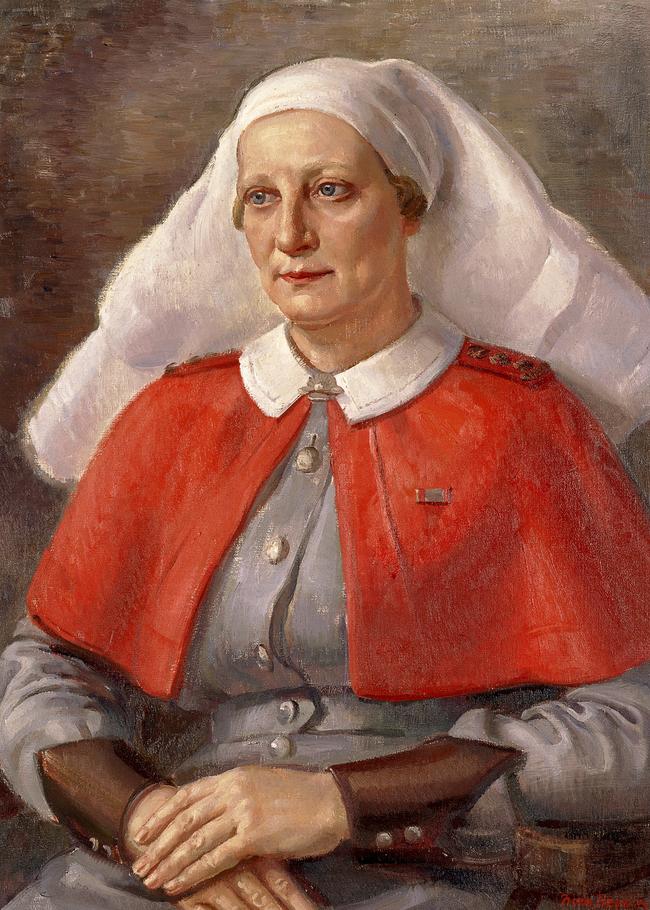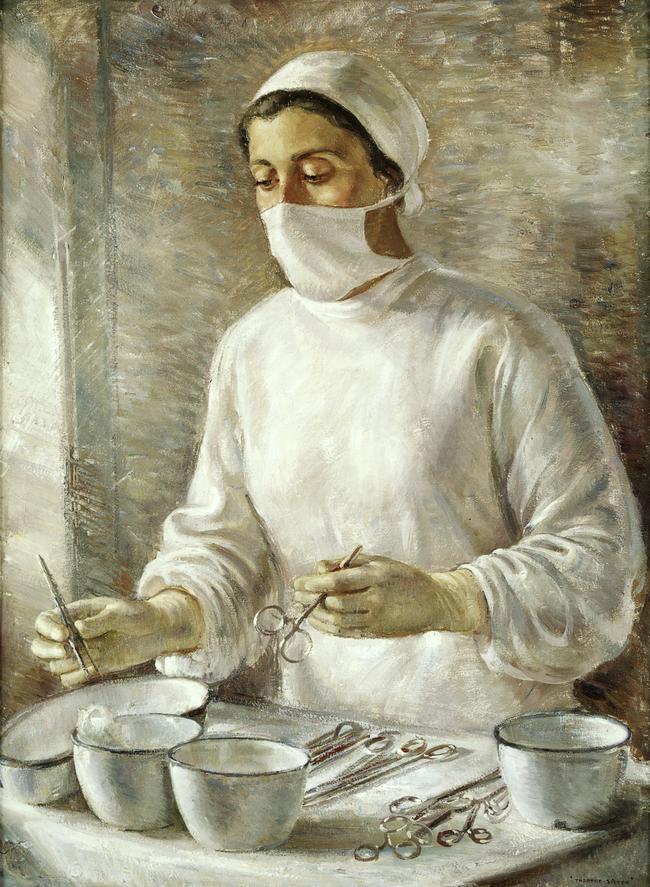Archibald Prize winner Nora Heysen became Australia’s first female war artist
Nora Heysen, the first woman to be appointed as an official Australian war artist, had many harrowing experiences in New Guinea when she arrived there 75 years ago this month.

Arts
Don't miss out on the headlines from Arts. Followed categories will be added to My News.
Nora Heysen, the first woman to be appointed as an official Australian war artist, had many harrowing experiences in New Guinea. But none could be stranger than her encounter with Sister Marie Craig, an Australian nurse who appeared to predict her own death, according to a new book.
Heysen had been posted to New Guinea to record the contribution being made by female service personnel to fighting the war against the Japanese. The artist arrived in Finschhafen 75 years ago this month and would spend the next two years executing her pioneering commission.
Three days before peace was declared in the Pacific on August 15, 1945, Heysen was stationed in Morotai with a unit of the Flying Sisters who cared for patients being medically evacuated by aircraft.
Anne-Louise Willoughby, in her new book Nora Heysen, A Portrait, quotes from a memoir by Flying Sister Beryl Chandler.

“Nora had approached me many times to sit for her and for one reason or another I did not want to,” Chandler wrote in the memoir which is held by the Australian
War Memorial.
“One day there was only (Sister Marie Craig), Nora and myself in the Officer’s Mess when once again Nora asked me to allow her to paint me.
“Again I wasn’t keen and dithered whereupon Marie said to Nora, ‘Look Nora, you might as well paint me, I’ll pose for you. This job is going to kill me anyway and at least people will know what Marie Craig looked like’.
“I was aghast at this statement, because she seemed to mean it ... She had this strong premonition that she would be killed.”
Heysen went ahead and produced a dignified and resolute portrait of Craig. Just one month later, Craig was on board a plane that disappeared en route from Biak.
“It was found 25 years later on the side of a mountain 14,000 feet above sea level in the Carstensz Ranges in Indonesian Papua,” Willoughby writes.
It was the kind of experience Heysen’s father had not wanted for her. A famous artist who would be knighted in 1959, Hans Heysen had been unhappy when his headstrong daughter applied for a war artist’s commission.

“Father didn’t approve of me going to war,” Nora Heysen would say. “He said I would see terrible things I would never forget.”
Indeed, Captain Heysen — her designated rank as a war artist — was painting at the site of a bombed-out German mission in Sattelberg, New Guinea, when she gradually became aware of a bad smell.
“Looking down (I) found I was quartered on the remains of a dead Jap,” the artist wrote. Conditions were often terrible in New Guinea. Humidity was unbearable and it regularly poured with rain.
“The paintings mildew overnight, they’ll be old masters before I get them back,” Heysen wrote home.
Her commission required her to paint surgeons as they worked on injured service personnel and on local tribes people who provided invaluable help to the Allies in New Guinea.
The operating theatre was both fascinating and irksome for Heysen.
“It is only by going out from time to time, and coming at it again, that I can watch and draw these things,” she wrote.

Rats were another common source of irritation in New Guinea, especially when Heysen found them sharing her bed or chewing a biscuit under her pillow.
Heysen’s biggest hurdle, however, was set by her own species.
Some of the experienced army nurses saw her as a newcomer who had been given an unearned ranking. Other army personnel just couldn’t come to terms with her presence in the theatre of war.
Nora Heysen was born in 1911 and grew up at The Cedars, her parents’ beautiful rural property in the Adelaide Hills. In the 1930s she travelled to Europe to further her art education. In 1938, she became the first woman to win the Archibald Prize.
Heysen’s appointment as a war artist was announced by the army on August 13, 1943, and she was discharged on February 8, 1946.
Heysen lived in Sydney’s Hunters Hill during the latter part of her life. Largely forgotten for many decades, Heysen was “rediscovered” in the late 1980s. By the time of her death in 2003, she was a revered artist — a status she never sought.
A large exhibition titled Hans and Nora Heysen, Two Generations of Australian Art, is on until July 28 at the Art Gallery of South Australia.
Nora Heysen, A Portrait, by Anne-Louise Willoughby, published by Fremantle Press, is available now

